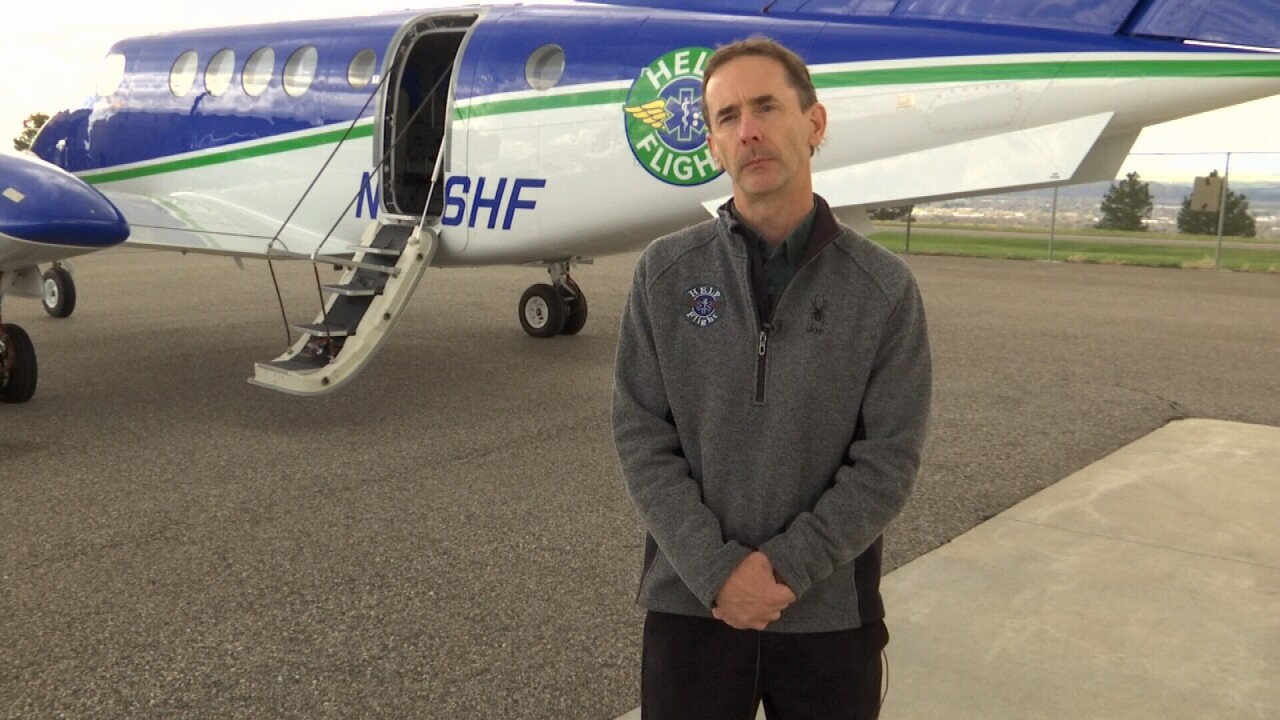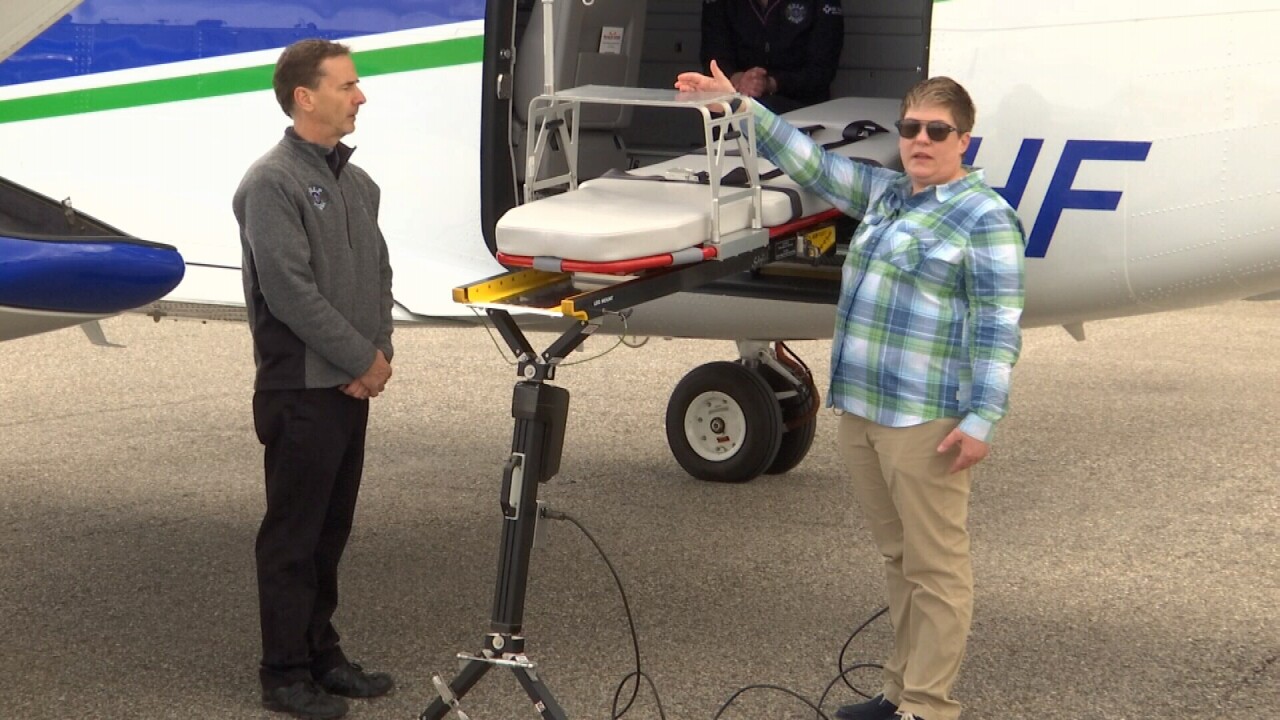BILLINGS — Members of the St. Vincent Healthcare HELP Flight team debuted the newest member of the air ambulance fleet in Billings Wednesday, a brand new King Air 250C airplane outfitted with features to improve help for rural Montanans in critical need of care.
St. Vincent has had the HELP Flight program since 1979.
The aircraft transport people from traumatic car accidents to specialist doctors outside of the state.
HELP Flight started with a helicopter and gained a fixed-wing aircraft similar to the new one in 2004.
The new plane can carry a heavier load, allowing the medical staff to bring along extra equipment for special patients.

Samantha Kaufman, St. Vincent Healthcare director of emergency services, said neonatal intensive care babies and cardiac patients will benefit from the increased storage.
“Our NICU babies, they sometimes have a bunch of extra equipment or if we have a cardiac patient that needs extra life support or (extracorporeal membrane oxygenation machine) or something like that, we have those capabilities now to store a bunch of specialty equipment in the back of the aircraft," Kaufman said.

The new plane has storage compartments on either wing and shelves in the back of the aircraft for extra storage.
The larger total weight capacity on the new airplane means that it has a longer range of flight. The HELP Flight team often transports people to specialist doctors in larger cities for medical treatment that isn't offered in Montana.
HELP Flight lead fixed-wing pilot Joe Lynch said the new airplane can fly an hour and 50 minutes longer than its predecessor.
The plane has four passenger seats, a bed for the patient and room for two pilots in the cockpit.
"We can put our neonatal intensive care unit on with all the people, pilots, baggage, fill the airplane completely full and we can fly nearly and hour and 50 minutes longer than the other airplane, which means Houston or Los Angeles or Chicago. There are no stops, we can go straight there," Lynch said.

The average flight time for the HELP Flight airplane is about 1½ hours round trip, Lynch said. The previous plane averaged 600 flights per year with one to two flights per day.
From the pilot's perspective, the new plane has some technology for easier navigation and easier flying in winter conditions, Lynch said.
It has a state-of-the-art weather system that allows the pilot to see upcoming weather in real-time. Then the pilots can dodge turbulent air that would jostle passengers.
“If we look at our weather on our map and it says it’s snowing right now, that’s where it’s at. We don’t have to worry about weather and having to try to make a decision on what’s it's going to do. We know what it is doing right now," Lynch said.
The new plane also has a de-icing function on the landing gear, allowing for less dicey landings in bad weather, Lynch said.

The new plane is larger on the inside than its predecessor, allowing the people inside a bit more elbow room.
It's outfitted with swiveling passenger chairs for better access to the patient, window shades that dim automatically depending on conditions, headsets for communication among passengers, and USB outlets to charge electronic devices.
A feature that will be a huge help to the crew is a loading door that is about four feet wide. The previous door was less than half the width. The patient bed can be easily slid on a track to an automated ramp that reaches to ground level, making the task of loading patients in and out much easier.
"The cargo door is a blessing. We don’t have to turn down anyone anymore. We used to be a little weight limited and size limited. We don’t have that anymore. It’s absolutely fantastic," Lynch said.
Samantha Kaufman, St. Vincent director of emergency services, said the plane will add value to their air ambulance service by better allowing staff to serve rural parts of Montana. She used the example of someone in Miles City needing a clot removal for a stroke, a service that isn't offered in the state.
“We can put them in the plane, and take them from say Miles City directly to Salt Lake City to have that done within the hour. I think it’s a huge part of the services that we offer to our community," Kaufman said.
The new aircraft will go into service Thursday.










